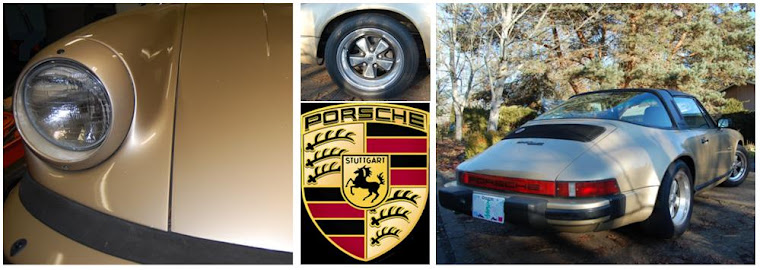The first part to go on the motor is the taper lock bush. This piece has a slight taper, and as you bolt it together with the hub, the taper provides a clamping force that grips the motor shaft. This is one of the most secure ways to mount a hub to a shaft. I used a dial indicator to keep the face of the hub square to the motor shaft, as I tightened the mounting bolts (marked 1, 2, and 3 in the photo). Any error here will cause the flywheel to wobble and the vibration will be annoying and cause excessive wear in the drive train. I was able to get the wobble down to 0.003” (75 microns), and run out down to 0.002” (50 microns).
The flywheel is bolted to the hub.

The clutch is centered on the flywheel with a special alignment tool.

Then the pressure plate is added. The clutch is squeezed between the flywheel and pressure plate, and transmits power from the motor to the transmission. When the clutch pedal is pressed, the pressure plate is pulled away from the clutch disk and the motor and transmission are de-coupled, making it easier to change gears.









It's coming along nicely Joey. Are you going to do anything to support the back end of the motor once it's mounted in the car? I'd seen Sebastian Bourgeios' 911 at EVCCON, and he had fabricated a bracket that mounted to the end face of the motor and reached across to mount to some points on the right and left sides in the engine bay. It looked quite slick. Then, he did have two motors mounted one on top of the other, so there was a bit more weight for him to be concerned about. I'm not entirely sure it's necessary, but it seems to me it would be best to remove the potential strain off the motor and adapter plate of having it cantilevered out into space.
ReplyDeleteThanks Tim. I'm planning to connect the back of the electric motor to the original rear cross bar that ties into the original rear motor mounts. That way the motor and transmission is well supported and the drive train will use all four of the original vibration absorbing mounts. The second post on this link has drawings of what I have in mind.
ReplyDeletehttp://www.diyelectriccar.com/forums/showthread.php/electric-porsche-66464p10.html
Your findings with the motor brushes and efficiency is very interesting. You got some coverage on evtv, and Jack is selling the red split brushes on his web site.
Excellent description. Thanks. I'm planning a similar project.
ReplyDeleteWhere did you get the adapter plate and connector from?
This company has been in business for a long time. The have a lot of adapters available: http://www.canev.com/
Delete